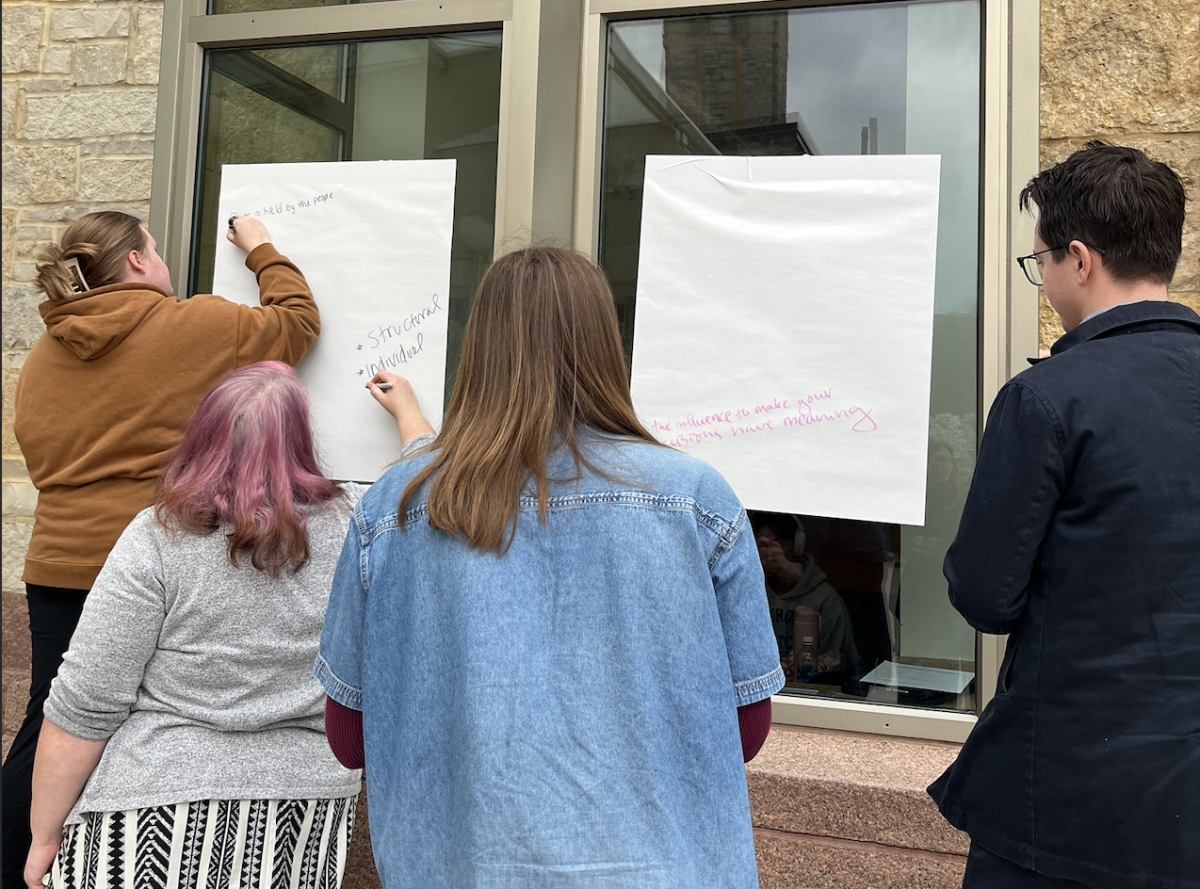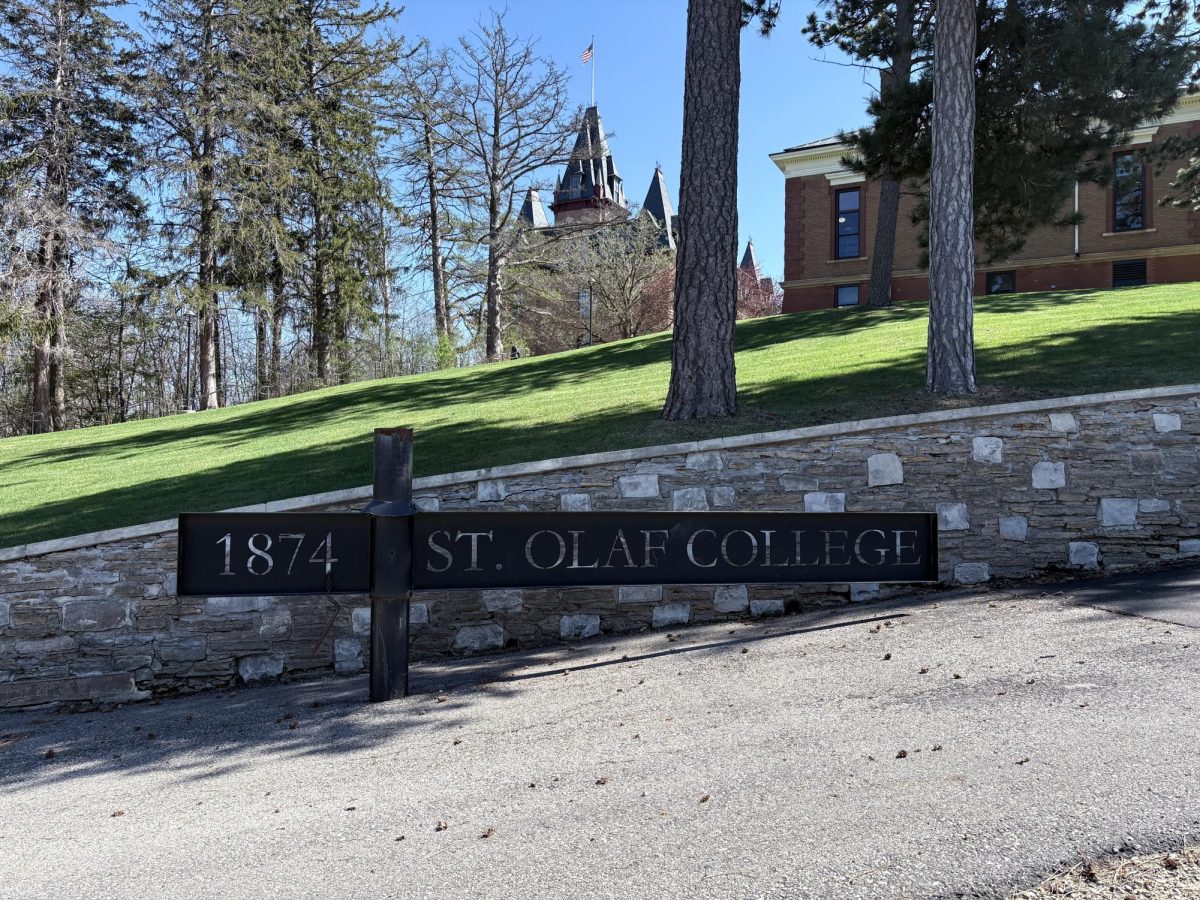By Anna Mulhern & Claire Strother

Uniformed Public Safety officers at St. Olaf College began the universal use of body cameras at the start of the 2021 spring semester. Since 2008, Public Safety has been using body cameras in a limited capacity. However, the new body camera guidelines substantially differ from previous protocol.
In the past, individual officers had the discretion to decide whether or not they would wear a camera, in addition to the video content they uploaded. Under the new protocol all uniformed officers are required to wear body cameras when they “interact in person for business or service related calls” and all footage will be automatically uploaded to a cloud server, wrote Director of Public Safety, Fred Behr, in an email to the Messenger.
The new body camera protocol was drafted by Behr, and approved by Vice President for Student Life Hassel Morrison, Vice President and General Counsel Carl Crosby Lehmann and Dean of Students Roz Eaton.
The decision to fully implement body cameras in the Public Safety department follows an external review initiated by Morrison and conducted in the fall of 2020.
The goal of the expanded implementation of body cameras is to “accurately document incidents and to enhance officer and community member safety when Public Safety responds to an incident or emergency,” Behr wrote.
The updated body camera protocol comes in the midst of a national reckoning with the impunity of police officers and debate over the purpose of public safety enforcement. Behr cited the goals of increasing “transparency and accountability” as main objectives of the body camera policy, noting that, “many state, local and college agencies view body cameras as a key tool to ensure officers are accountable for their actions and departments are transparent.”
While Behr views the body cameras as a way to increase transparency, students have voiced concerns about implications of a lack of communication about Public Safety’s use of body cameras — both on a campus-wide and individual level. The body camera policy does not require Public Safety officers to disclose to community members when they are being filmed. Furthermore, since the inception of the body cameras on campus in 2008 there has been no routine notification to students of the policy’s existence. The absence of continued communication has raised concerns from students.
“It is removing the line of accountability from public view,” Maddy Bayzaee ’23 said. “Who is holding you accountable if you are the only ones who have knowledge of [the body camera footage]? And if you are not actually going to look at it unless there is a report? And so the idea that body cams are important for accountability and important for being a digital witness to crucial events is only useful insofar that people know it’s there.”
In the current policy iteration, body camera footage is only reviewed by a party other than the responding officer if a community member involved in an interaction brings forward a concern. Public Safety officers and their superiors exclusively have access to the footage unless it is requested for legal proceedings. There is currently no reporting process for Public Safety specific incidents, however, Morrison encouraged students to utilize the bias reporting system.
“A reasonable approach for right now would be let’s have the footage on and if something happens we can look at the footage,” Morrison said. “But that’s not something that we can’t change. I think that’s a common sense baseline.”
However, Morrison also noted the limitation of body cameras as a singular method. “If you don’t have training and accountability you can have policies, you can have cameras, and none of it means a thing,” Morrison said.
Bayzaee expanded upon Morrison’s sentiment that body cameras are a tool rather than the ultimate solution.
“The idea is that institutions like St. Olaf College and Public Safety are not self critical,” Bayzaee said. “That’s evident in that they haven’t told everyone that they have body cam footage. And it’s evident in that they don’t look at body cam footage unless it is necessary, unless they are told to. That is exhibit A for them not being self-critical, and so when you have an institution that is attempting to hold itself up and not criticize itself, they cannot be the ones to review the footage. They cannot be the system in place to check themselves.”
Reporting on Public Safety is ongoing.


